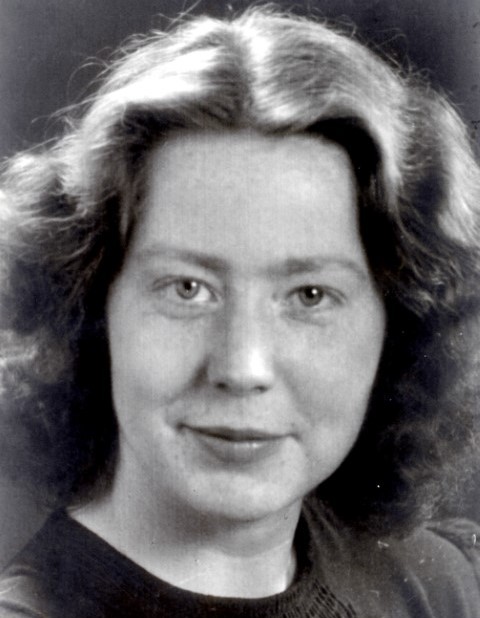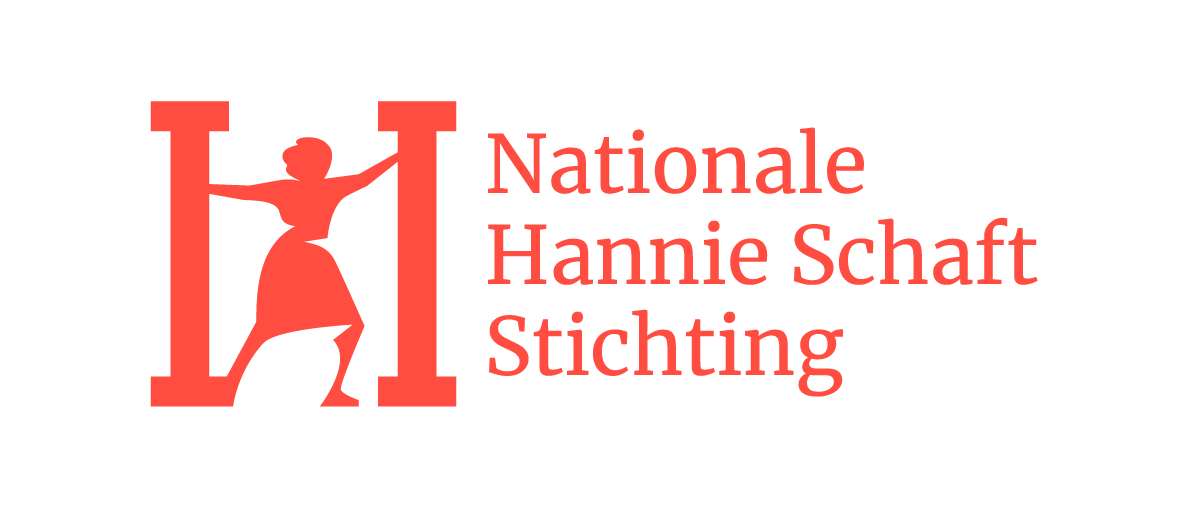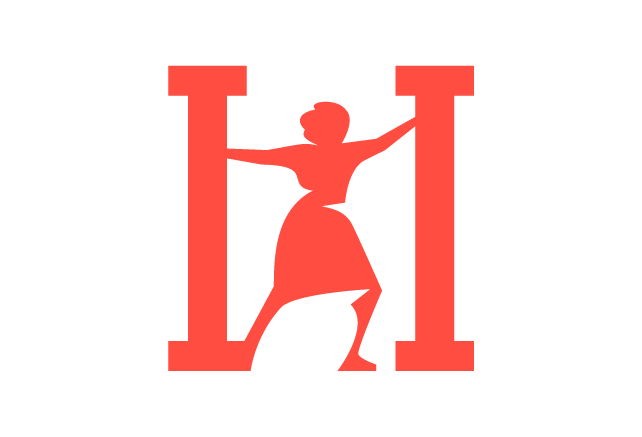Important moments in the life of Hannie Schaft
Hannie Schaft was a remarkable resistance fighter during World War II. While other women were active in the resistance, Hannie was one of the few who participated in the armed resistance against the Nazis. This cost her her life: just before liberation, she was captured and executed by firing squad. This, too, was exceptional; the Nazis rarely executed female prisoners of war.
This timeline provides an overview of important events in Hannie Schaft’s life.

Jannetje Johanna Schaft was born in Haarlem on September 16, 1920. She was nicknamed Jo or Jopie. She had a sister, Annie, who was five years older. Her parents were Pieter Schaft and Aafje Talea Vrijer. Her father was a teacher at the Rijks Kweekschool (a teacher training college).
Both parents were socialist (left-wing). Growing up, Jo often listened to her parents discuss the news in the newspaper or on the radio.
When she was four, Jopie started kindergarten. One day, she drew a picture of a house with the word "peace" on the facade. At that time, she knew nothing about the coming war.
Afterward, the family moved to Van Dortstraat, where Jo attended the Tetterode School.
She was a good student but had no friends. People who knew her say she seemed shy. According to her cousin, she was teased about her red hair and freckles.
When Jo is seven, her sister Annie—then twelve—dies of diphtheria. It's a contagious throat infection. At that time, many children died of diphtheria because there wasn't a vaccine yet.
From then on, her parents are very worried about losing Jo too. Jo absolutely mustn't catch a cold, so even in the summer, she has to wear a jacket or cardigan. They constantly warn Jo to be careful in traffic.
Jo Schaft attends the Tweede HBS-B (Second Higher Secondary School) on Santpoorterplein, near the house on Van Dortstraat. She enjoys learning and is often the best in her class. She is taking the state exams in Greek and Latin to be admitted to law school.
In 1938, Jo began studying law in Amsterdam, specializing in international law. She dreamed of later going to Geneva to revive the League of Nations.
She joined the Amsterdam Women's Student Association (AVSV) and formed a fraternity with two other students. At the university, she met Philine Polak and Sonja Frenk, two Jewish students, and became friends with them.
On September 1, 1939, Germany invaded Poland. Jo sent parcels to captured Polish officers through the Red Cross.
In May 1940, the Netherlands was occupied. Jo sought ways to join the resistance.
When Jews are forced to wear the yellow star and their freedom of movement is restricted in every possible way, Jo steals two identity cards from a swimming pool locker room. She has a fellow student forge them for her friends Sonja and Philine.
Jo comes into contact with the resistance in Haarlem. One of her first assignments is to find sisters Truus and Freddie Oversteegen. They're in hiding in Twente, where they're mapping the airfield. Jo has to tell them to return to Haarlem after this job. From then on, the three often work together in the resistance.
Through intermediaries, Jo comes into contact with the Haarlem Council of Resistance (RVV). She announces her intention to engage in more active resistance, "with weapons if necessary." She and someone else are tasked with shooting an SD officer. She does so. But there's no bullet in her pistol; there's only a click. The SD officer approaches them and introduces himself: Frans van der Wiel, commander of the RVV. Jo has passed the ordeal. She's furious, but she's proven herself suitable for resistance work.
With her red hair, Jo is a striking figure. Because she's been spotted in several attacks, it's time for a new identity. She dyes her hair black and puts on window-glass glasses, giving her a completely different look. She also receives a new identity card: from now on, she's Johanna Elderkamp, nicknamed Hannie, born in Zurich.
Hannie spends a lot of time with Jan Bonekamp, from whom she also received shooting lessons. Together with him, she carries out an attack in June 1944 in Zaandam on police captain Ragut, who had betrayed many people. Hannie shoots the man off his bicycle. Jan follows to deliver the coup de grace, but at the same moment, Ragut shoots Jan in the stomach. He ends up at the first aid station, where someone alerts the Sicherheitsdienst (Security Service). Just before his death, they extract several addresses from him, including—through someone who identifies himself as a friend—that of Hannie Schaft.
When Hannie realizes that Jan is in the wrong hands, she immediately goes into hiding. For a long time, she mourns the loss of her good friend. The Sicherheitspolizei takes Hannie's parents hostage, hoping she will turn herself in. Her friends manage to dissuade her.
On March 21, 1945, Hannie was arrested at a checkpoint in Haarlem-Noord. Illegal newspapers were found in her panniers. Late that night, she ended up in the House of Detention on Oostvest in Haarlem. There, they also found her FN-9mm pistol in her handbag. Two prison guards made plans to free her, but before they could carry out their actions, Hannie was transported to Amsterdam that same night.
After days and nights of interrogation, during which Hannie confessed to several attacks but didn't reveal any addresses, she was taken to Overveen on April 17, 1945. There, she was ordered to get out and walk along the dirt road toward the beach. Along the way, her two companions, Maarten Kuijper and Mattheus Schmitz, shot her dead. She was buried on the spot in the dunes.
A few months after the end of World War II, on November 27, 1945, Jannetje Johanna Schaft was reburied at the Honor Cemetery, not far from where she was shot. She was the only woman buried there among 421 others. She had collaborated with many of them in the resistance.
For years, a statue for Hannie Schaft was held up by political debate. Many objected to the fact that a socialist/communist resistance heroine would be honored. Only in the 1980s did the chill of the Cold War subside sufficiently for a statue to be commissioned.
On May 3, 1982, Princess Juliana unveiled the statue, sculpted by Truus Menger-Oversteegen, Hannie's comrade in the resistance, amidst considerable public interest. It stands in Kenaupark in Haarlem.

